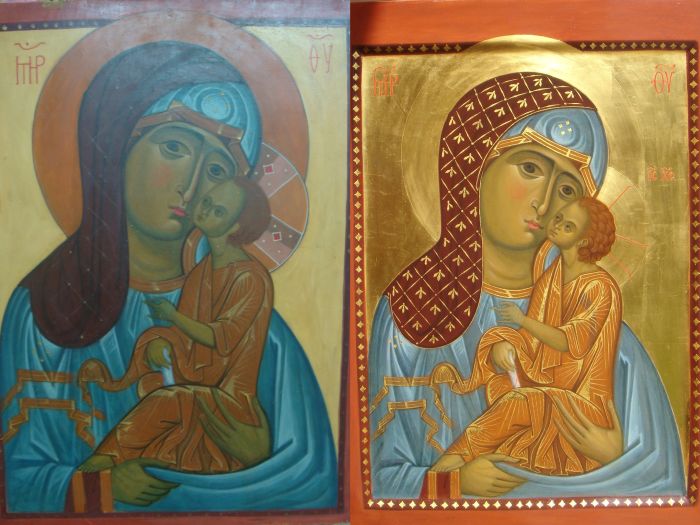Icon of the Holy Mother of God copy
- Самовивіз з Нової пошти
- Кур'єр Нової Пошти
- Самовивіз з магазину
- Інші транспортні служби
- Готівкою при отриманні
- Безготівковий переказ
- Приват 24
Icon of the Mother of God of Passion of Novgorod
The history of the icon can be traced back to the descriptions of the Assumption Cathedral only from the 18th century.
Until now, she is lost in the numerous icons of the Passion and the loins of the Mother of God. Without specifying the iconographic type, the 1701 description mentions an "image of the Most Holy Theotokos girdled" in a silver frame in a kiota near the northern pillar on the northern side.
The description of 1771-1773 repeats this entry, adding to it a list of precious stones in the crowns of the Virgin and Jesus.
The fact that this icon is an image of the Virgin of Passion of the 12th century is evidenced by its schematic image, published in 1911 by N. P. Likhachev from an engraving of the 18th century.
The description of 1815-1818 shows that the icon was located in the same place - near the north-eastern pillar on the north side, but has a different, simpler salary.
In the descriptions of 1841-1843 and 1853-1854, the icon is already called "Athos", and the postscript of the middle of the 19th century to the first of the mentioned descriptions informs about the transfer of the icon to the iconostasis near the southern wall of the cathedral.
The name "Athos" is associated with the newly appeared shrine - the Akathist Hilandar icon of the Mother of God. During the restoration of the icon and the production of a new silver plate for it in 1875, the inscription "Akathist of the Most Holy Mother of God, located in the Hilendar monastery of Sava of Serbia" was engraved on the field of the plate.
At the same time, the iconography of the Moscow icon differs from that of Athos.
From a massive silver salary of 1875, the icon was unveiled in 1961. At the same time, the darkened olifa was removed, under which a painting of the late 17th and early 18th centuries was first discovered (perhaps this record belongs to the royal isographer Kirill Ulanov, who during this period was engaged in the restoration of a number of ancient icons of the Assumption Cathedral). When the icons were further opened, paintings of the 12th and 13th centuries were discovered.
-
State:Nova
-
Material:linden board, oak dowel,
-
paints:natural pigments, acrylic oil paints
-
producer:Ukraine (icon workshop)
-
performance technique:canonical and academic style
